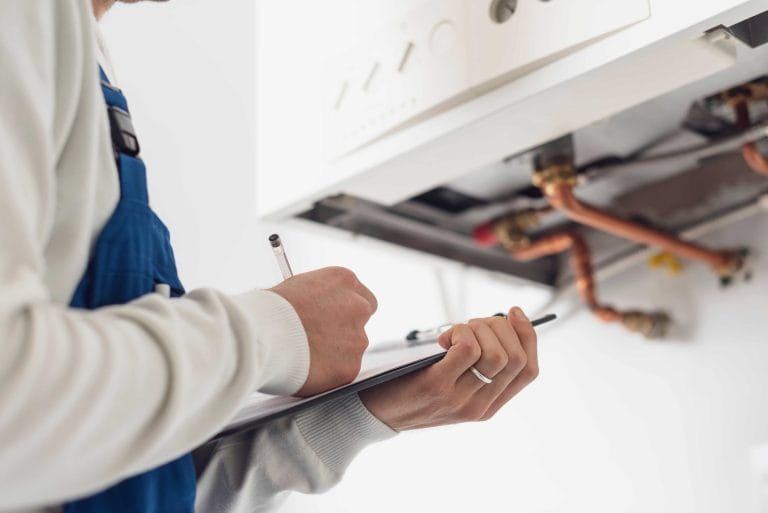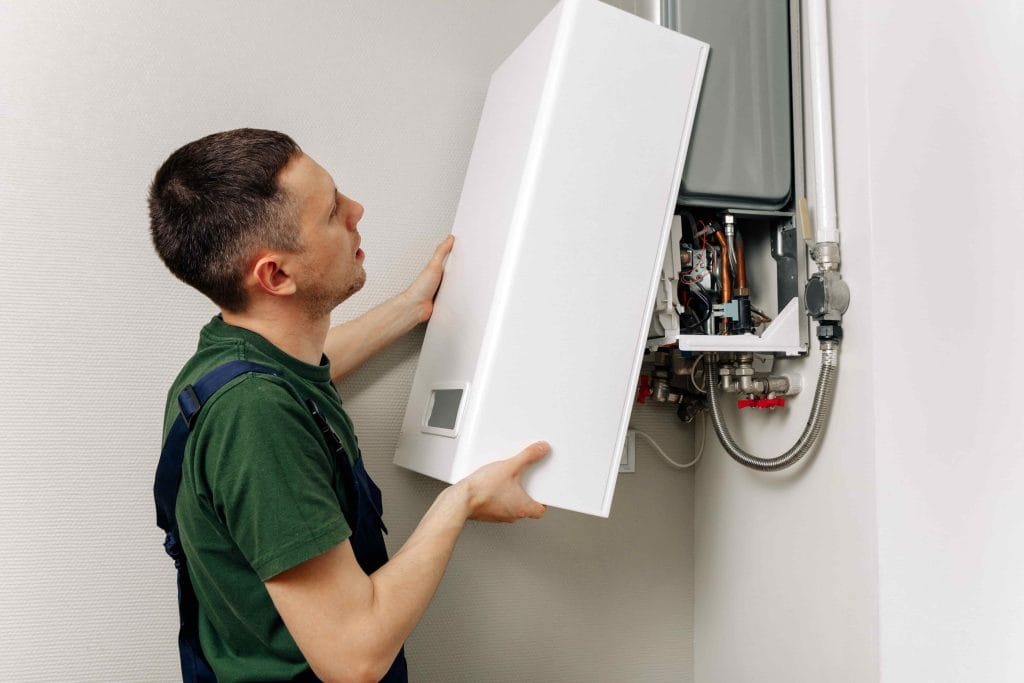What is more relaxing than a hot shower or bath after a long day out? However, the much desired moment is destined to vanish because the boiler does not work as it should. How to fix the problem? Let's find out together.
Why can't the boiler heat up water?
The reasons why the boiler does not produce domestic hot water can be different.
- One of them is related to pressure. In fact, it may happen that a too low pressure prevents the boiler from functioning correctly, even when heating rooms through radiators. The pressure must be set between 1.2 and 1.5 bar.
- In addition to it, the temperature of the water itself can affect it. The values indicated for the domestic hot water temperature range from 120° F to 140° F.
- On the other hand, it may happen that while the radiators heat up normally, no hot water comes out of the tap. Most likely the cause is to be found in the thermostat.
- The malfunction could come from the electrical system rather than from the gas system. The main energy switch must be checked and the gas system must be activated. It is also necessary to make sure that there are no interruptions on the supply lines.
- Limestone, as often happens, plays an important role. In particular, two mineral salts present in the water, magnesium and calcium, at high temperatures generate the chemical compound called calcium carbonate, i.e. limestone. Its presence contributes to not reaching adequate pressure.
What should I do if the boiler does not warm the water?
There are several ways to try to solve the problem of a boiler when no hot water comes out of the taps.
Looking at the heat generator display can help you get an idea of what the mishap is. Any anomaly is signalled by an error code. You can consult the instructions of the model and the ways to intervene, when possible.
In fact, the best solution, faced with this kind of situation, is to ask for the assistance of a specialised technician.
If the problem is related to water pressure, keep an eye on the pressure gauge which indicates the level and turn the knob to reach 1.2-1.5 bar.
The sudden changes in pressure are also affected by anomalies in the flue gas exhaust system or by water leaks. This is why it is important to rely on the skills of an expert technician.
As seen above, the combination of hot radiators and cold water from the taps could be the result of a problem with the thermostat. The operation is delicate and must be performed by specialised technicians.
- You need to disconnect the thermostat from the heating system and wait for the radiators to cool down.
- The hot water tap should then be opened to check whether the boiler has started working again or not.
- If the boiler resumes working normally, but the water is still cold, make sure that the radiators warm up or that they are disconnected.
- If they are hot, the thermostat is disconnected and the water does not come out hot from the taps, the problem may be due to the malfunctioning of the diverter valve. This is used to divert the hot water to the radiators.
A quick intervention, on the contrary, allows you to eliminate the limestone at least in the taps: just disassemble the filters at the tap mouth, removing the sediments. By doing this, the stream should have the right pressure and the water will heat up again as expected.
Finally, to obtain hot water it may be sufficient to set the hot water temperature, similar to what is done with pressure regulation.
- With traditional boilers, the selector must be moved to the domestic hot water mode, marked by the symbol of a tap. The appropriate knob raises the value which must be between 120° and 160° F.
- With the most advanced boilers, the digital controls must be activated, accessing the functions of the heat generator.
What to do if the boiler does not warm the radiators?
When, with the boiler on, the radiators do not heat up, you can try to fix it by checking the pressure. If too low, the water does not reach the heating system.
Turning, even slightly, the special tap located in the lower part of the boiler, the pressure returns to the correct values, always between 1.2 and 1.5 bar. If the level exceeds the maximum limit of 2 bar, then it must be lowered by venting the radiators which do not heat.
Radiators that are not hot enough with the boiler operating regularly may also depend on the temperature set on the thermostat. In fact, when it is too low, radiators do not warm up further.
On the other hand, if the problem persists even after resetting the temperature on the thermostat, then a thorough diagnosis by a technician is essential.
How do you know if the thermostat is not working?
The thermostat is the component that allows you to regulate domestic heating, managing the boiler’s switching on and off, based on the selected temperature.
For example, if we set it to 68° F in an internal environment with 65° F, the thermostat is activated, often accompanied by a sound similar to a metallic click. This will turn on the boiler and the heating system. Unfortunately, it happens that the mechanism does not start.
Why?
- The thermostat may be set to cooling mode. It means that it operates in reverse: it comes into operation when it is necessary to lower the temperature. It should then be returned to heating mode.
- Although the thermostat started, the boiler did not turn on. Either the latter has problems or the cause is in the connection between the device and the heat generator. It is a more probable hypothesis especially in the case of a new installation: it will be necessary to carry out a check, always relying on a professional in the sector.
The new technologically advanced versions offer users effective and intelligent solutions for monitoring thermostat operation with greater safety. The wifi systems they are equipped with allow you to connect the thermostats to the network and manage them even remotely.
Notifications on mobile devices such as smartphones include alerts for unexpected events and anomalies, as well as air quality updates.
The latest generation thermostats are then equipped with algorithms that "study" the habits of the inhabitants of a house. Thus they help to better regulate the temperature and save on energy costs.











































